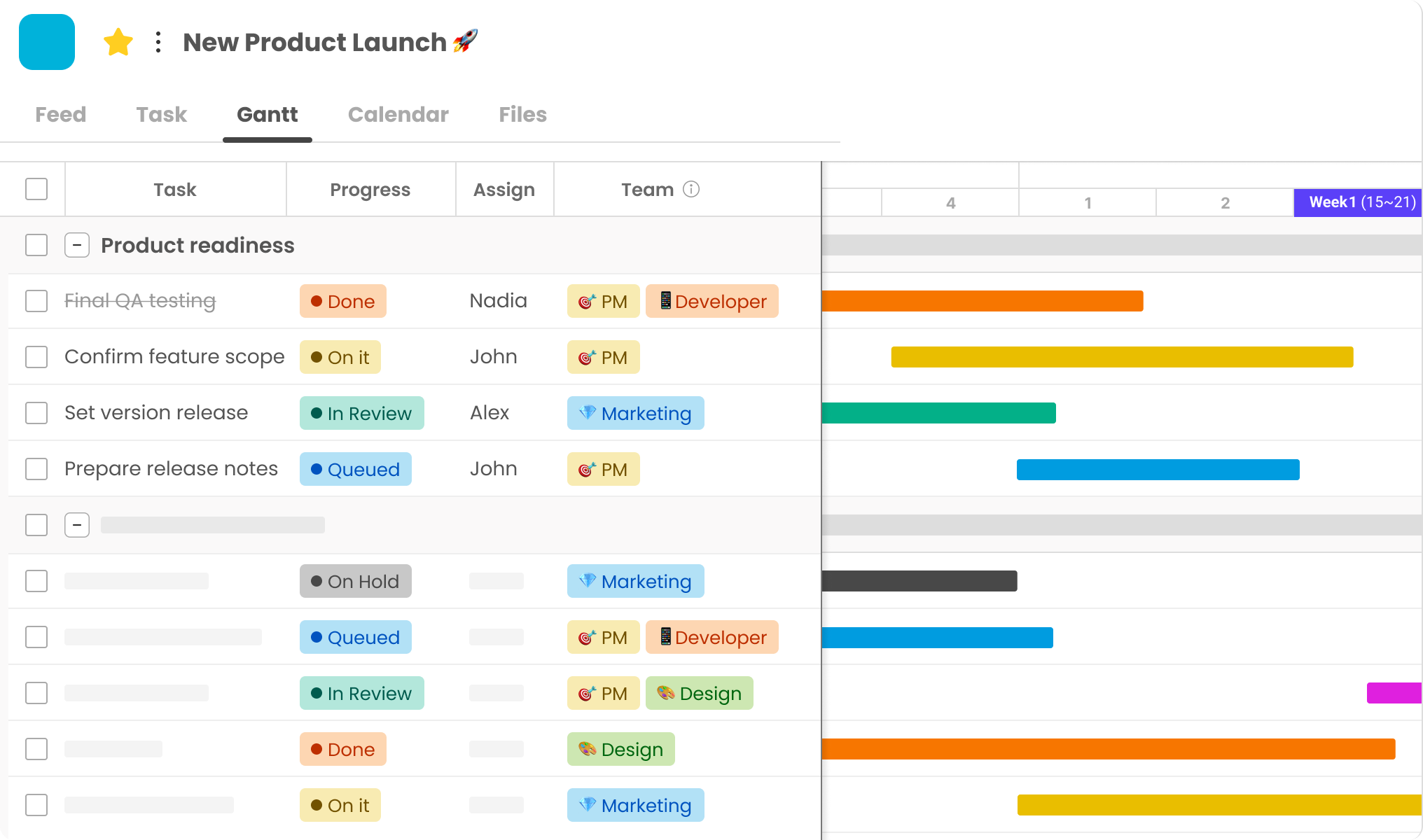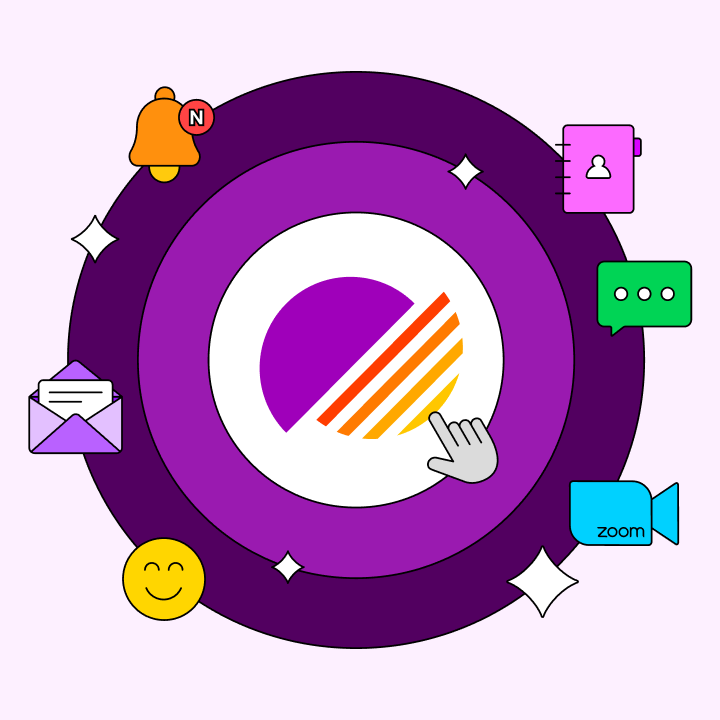Cross-functional collaboration should be easier than ever. We have chat apps, shared drives, and task tools—yet work still stalls. Teams can’t see each other’s priorities, updates get buried, and approvals slip. The fix isn’t “another app.” It’s clear workflows (goals, owners, handoffs) supported by a platform that keeps conversation, tasks, files, and timelines together. Research-backed guidance highlights the same barriers and remedies; below you’ll find both, followed by how to operationalize them in Morningmate.
The Problem: Five Barriers That Break Cross-Team Collaboration
1) Misaligned or invisible goals
You ask another team for help and hear, “That’s not a priority for us.” Often it’s not resistance—it’s a lack of shared goals or clarity on how work ladders up. When goals aren’t visible, collaboration hits a wall.
Solution concept: Publish company and team goals where everyone can see them, and explicitly link projects to those goals. Short, regular updates (“what’s shipping next”) make alignment concrete.
2) Low visibility into other teams’ work
“Did you know X team is already working on this?” Opportunities are lost because work isn’t discoverable. People don’t know what’s happening outside their lane. Cross-functional collaboration_…
Solution concept: Share upcoming work in a central place. Use brief status posts and give colleagues a destination to dive deeper when needed—without flooding everyone.
3) Role, responsibility, and jargon confusion
Teams talk past each other. Without a living AoR (areas of responsibility), collaborators don’t know who owns what or what terms mean.
Solution concept: Maintain an AoR directory and normalize “explain your acronyms.” Invite teams to present what they’re building in short, recurring show-and-tells.
4) “No time” to collaborate
Cross-team asks feel open-ended and risky. Without a clear scope and time estimate, collaborators defer or decline—even when the actual lift is small.
Solution concept: Make precise asks: owner, deliverable, due date, and estimated time. Smaller, defined contributions are easier to accept.
5) Habit inertia and tool fatigue
Even good processes fail if they require a big behavioral jump. Teams need an easy ramp and local champions to nudge new habits into place.
Solution concept: Pilot new workflows on low-stakes projects, nominate a champion, and expand once the habit sticks. Integrations help people transition smoothly.
The Solution: Operationalize Collaboration in Morningmate
Below, each barrier maps to concrete Morningmate practices—so the fix isn’t theoretical, it’s operational.
Make goals visible and connect work to outcomes
- Create a Company Goals workspace (comment-only for most) and a Team Initiatives space per team.
- Link tasks/posts to specific goals via custom fields (goal, KPI, quarter).
- Publish a weekly status post (“What’s shipping next”) with links to live tasks—scannable, not chatty.
Give everyone a transparent view of work in flight
- Keep tasks, files, and discussion in one place; avoid feedback in scattered threads.
- Use dependencies and status gates (“Ready for review” → “Approved”) so handoffs are explicit.
- For FYIs, share public view-only links for read access without workspace sprawl.
Clarify roles and reduce jargon friction
- Maintain an AoR directory post (team → owner → scope → links).
- Standardize naming in custom fields (e.g., Channel, Persona, Stage).
- Run monthly, 20-minute show-and-tell events; attach recordings to an index post for new joiners.
Make collaboration asks small and specific
- Convert requests into subtasks with owners, due dates, and an Est. time field.
- Template “request” tasks (e.g., Copy Review Request) with a short form: context, audience, word count, due date.
- Use filters to spotlight “Blocked” or “Waiting on” items before standups.
Lower the activation energy for new habits
- Start with a one-page meeting notes template or a weekly update template—something universal.
- Nominate a process champion to prompt “Hey, can you put this in Morningmate?”
- Connect Gmail/Drive so email threads and files become searchable context on the task/post.
Example: Problem → Morningmate Solution (Three Quick Wins)
Problem A: Campaign launches slip at the last mile
Teams finish their parts, but approvals and web updates collide. No one sees blockers until launch week.

Morningmate fix: one launch template with dependencies (Brief → Creative → Web → Ops → Enablement → Go-live). Use status gates for approvals, @mention owners for handoffs, and keep all files & comments on the task, not in chat screenshots.
Problem B: Lead handoff loses context
Marketing captures leads, but sales gets only a name and email—no persona, pain, or source.

Morningmate fix: a “Lead Handoff” task template with required custom fields (Persona, Pain, Source/UTM, Region). Auto-notify the owner; require “Reject with reason” to create a feedback loop.
Problem C: “Who owns this?” stalls work
Decisions float in DMs; no one is sure who approves what.

Morningmate fix: a pinned AoR directory post + approval tasks per workstream. Everyone can find the owner and see the approval state at a glance.
Your First 30 Days (Problem → Solution Rollout)
Week 1: Audit & pick one initiative
List cross-team pain points; pick ONE (e.g., campaign launch). Map trigger, steps, owners, SLAs, approvals.
Week 2: Build a Morningmate template
Create tasks/subtasks, dependencies, statuses, and custom fields (goal, channel, stage). Add a status-update post.
Week 3: Pilot & measure
Run 1–2 projects in the template. Track cycle time, on-time rate, and count of blocked tasks.
Week 4: Iterate & expand
Tighten the template, publish “v1,” add AoR directory, and roll to an adjacent workflow (e.g., enablement or handoff).
Why This Works
Clarity and transparency drive collaboration outcomes. When goals are visible, roles are explicit, and work is managed where conversation and files live together, trust rises and cycle time drops. The problem/solution approach above mirrors proven guidance while translating it into daily operations you can actually run in Morningmate.




